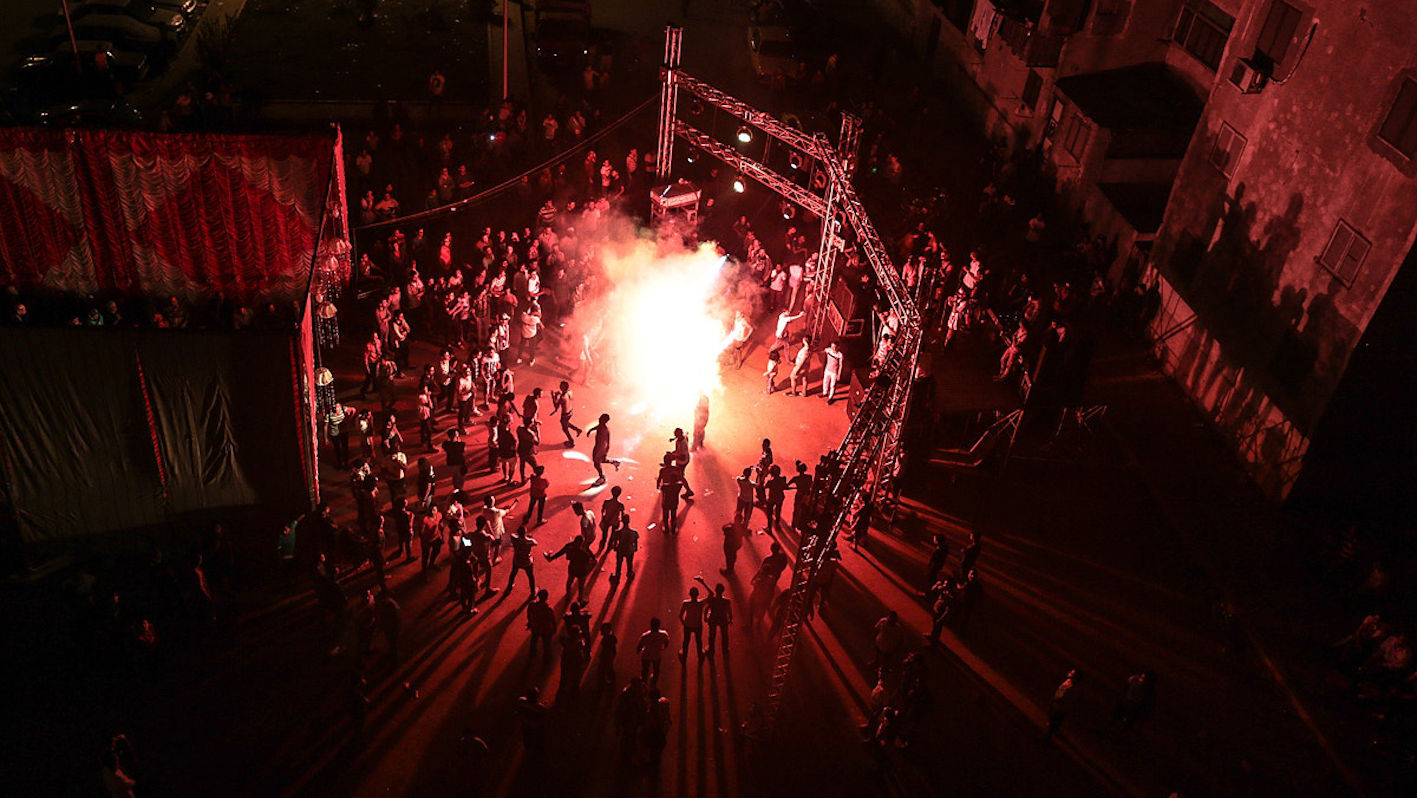Mahraganat (All pictures with courtesy of Mosa’ab Elshamy)
Informing underground and mainstream music not only in Egypt but in scenes all over the globe, Mahraganat saw a triumphant rise to power during the last decade. As it’s often the case with fast-evolving genres, the fusion of hip hop and electronic music first resounding in Cairo’s outskirts faces various obstacles. In this piece, Fady Adel introduces us to the sound that’s dominating the Egyptian scene and explains why the local artist establishment is reviling the subgenre, why hip hop heads turn their back on it and how Mahraganat is being commodified.
If you’re not in the percentile of humans alive today who still think Egyptians live between sparse desert dunes, write in hieroglyphs and commute via camels, then chances are you’re in the camp who can actually point out Egypt on a map, and are aware of its lasting cultural influence in the MENA region.
Furthermore, if you fulfill all the above criteria and you’re remotely interested in contemporary Middle Eastern music, then there’s one specific genre I’m sure you’ve found hard to miss in the last decade, and that is mahraganat, better known to foreign audiences as ‚electro-shaabi‘, a term popularized by 4:3’s 2013 documentary on the sound.
Now nearly 13 years into its existence, you can’t walk anywhere on the streets of Egypt without hearing the mahraganat’s hallmark sound, with its explosive percussion, high-octane synth lines, and amped-up MCs, blaring out of every store and passing vehicle, be it car, motorbike, minibus, rickshaw or ‚tuktuk‚ as they’re mainly referred to.
Not only does the sound completely engulf every square inch of the country’s streets, but it’s also incredibly hard to miss on television, be it in ads or series/movies, at weddings, birthdays or any festive occasion where dancing is customary or encouraged. This is especially jaw-dropping when taking into account how the genre started in, and spread through Cairo’s most impoverished neighborhoods, before making its way out to the masses via the world wide web.
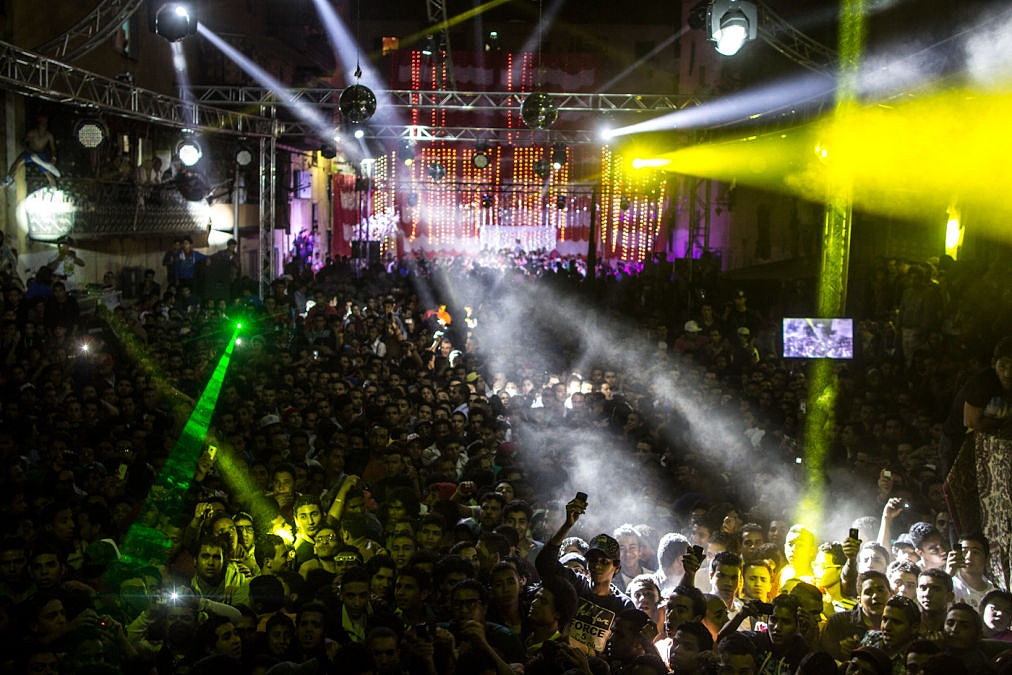
Nowadays it’s rather unremarkable when you see Egyptian cinema A-listers mimicking the style on a track for their new movie, or crowds starting mosh pits to mahraganat tracks at weddings costing more than your house, or entire songs made for TV ads that go insanely viral. This rags to riches story of the genre of course impacted many mahraganat artists’ lives too. Around this time last year, MC Hamo Beka almost ran me over in downtown Cairo as he was likely posting a story at the wheel of his ‚Sun Yellow‘ CLA Coupé.
Despite having found a home in the hearts and minds of Egypt’s youth, mahraganat has undergone many ups and downs, breakthroughs and setbacks, moments of praise, and scrutiny. From breaking through internationally following the Arab Spring revolt, to the continuous shunning of the sound by the conservative, elderly body of Egypt’s Musicians‘ Syndicate, to the commodification of the sound by big corporations who capitalize on the sound as a marketing tool, here are some of the genre’s biggest moments. Here’s the mahraganat story, thus far.
Early Beginnings
It’s a common misconception that, as a sound, mahraganat was invented following the 2011 uprising. The truth, however, is that the genre has been slowly but surely brewing, on pirated FL Studio projects, in the bedrooms of inner city producers and wedding DJs since 2008.
Literally translating to ‚festivals‘ mahraganat or electro-shaabi is a style that was first spawned by Cairo’s inner-city wedding DJs in the early to mid-2000’s. Youth in the neighborhoods of Boulaq & Giza used to play on rack mount CD players where they experimented with looping. They’d pick a word out of a famous shaabi song, loop it, all improvisational, and mostly in weddings. This phenomenon wasn’t at all consistent or patterned.
While the geographical origin of the defined end product within Egypt is often contested, substantial evidence and various testimonies point to the neighborhood of Salam City, on Cairo’s outskirts. In fact if the sound can be traced to one particular producer it would be Salam City’s very own Figo, with his track ‚Mahragan El Salam‚, 100Copies label-head Mahmoud Refaat attests. One of Cairo’s first independent labels, and one of the few to push leftfield sounds of any sorts, 100Copies has been hugely instrumental in pushing the mahraganat genre early on and working with its first artists on releases, events and tours.

„In Salam City were the first guys to do it consistently, they had beats, lyrics, breaks, drops, shoutouts, themes and topics. So the fact that Figo became the genre’s first producer isn’t that contested, even early artists like Amr 7a7a attest to that. Figo was also the first person to start recording his own loops and samples, and the first to write lyrics and bring on another MC to perform them.“
The sound inevitably fed back into the same wedding music that inspired it, and it wasn’t long before the sound found its way to the internet on platforms like Youtube and Soundcloud, not to mention the exchange of mahraganat-filled flash drives between cab and tuktuk drivers and stores, contributing to the sound’s wildfire-like spread on the streets.
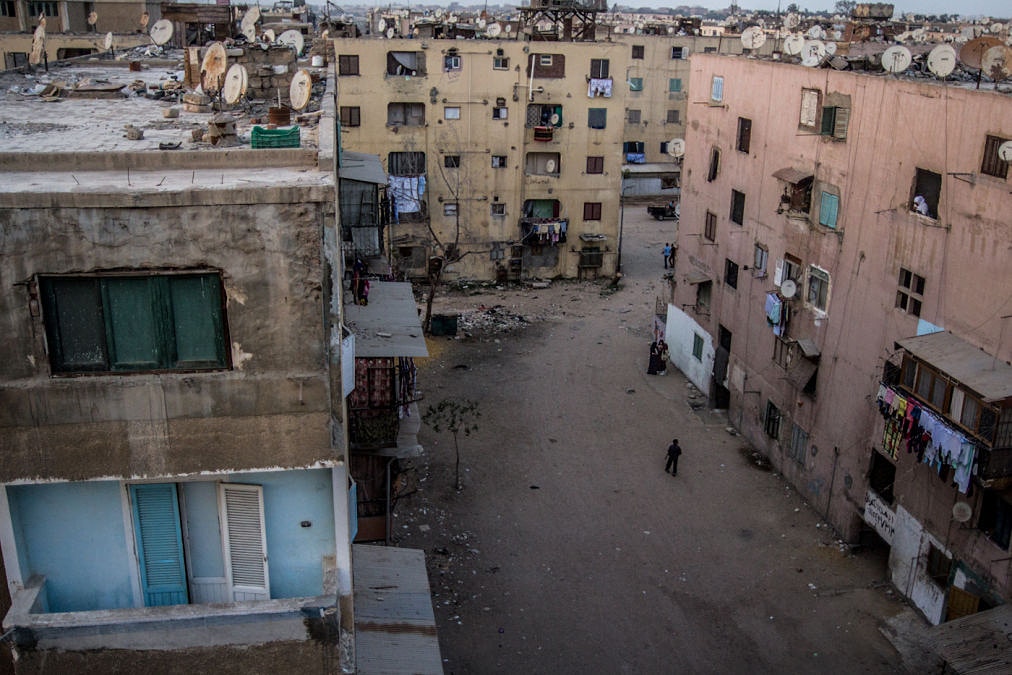
During its first few years the mahraganat’s influence grew rapidly, giving rise to a culture, and an economy. From having its own dance moves, fashion and hairstyles, to the clothing stores, barbershops, graphic designers, music studios and party organizers who quickly popped up left, right and center as reaction to what was now officially Egypt’s first dance music.
The style fell on fertile ground in the city of Alexandria too, on Egypt’s Mediterranean coast. A new take on the sound developed, entirely inspired by the early Cairo producers and MCs like Figo, 7a7a, Alaa 50 and Sadat. They used that sound as a building block to their own coastal sound which is more melodic, both musically and vocally. In other words, mahraganat out of Cairo cared more about storytelling than aesthetics, while in the coastal city it was the other way around.
Foreign praise, local dissent
As all eyes turned to Egypt following the revolution, foreign audiences were quick to pick up on mahraganat, and MCs like Sadat performed in multiple European cities as early as 2011. Around the same time international journalists and filmmakers descended upon Egypt to document the rise of the movement.
Simultaneously, the sound was developing a bad reputation at home, and amongst the societal segment comprised mainly of orthodox Egyptian musicians, upper-class individuals and religious conservatives who were all voicing a rarely unified cry of outrage, stemming from how the sound stands against the ‘core Egyptian values’ and is a spit in the face to Egypt’s musical heritage and common decency.
This can be described as a cultural anaphylaxis of sorts, as up until that point in time digitally-produced dance music, with lyrics that nearly-explicitly describe sexual escapades, recreational drug use, and life in poverty were not socially nor religiously acceptable artistic themes.
This sentiment still resonates with the country’s elderly population and more classical musicians who often refer to the music as ’noise pollution‘ This phenomenon would slowly dissipate to a large extent, as the music seeped into the mainstream and became virtually inescapable.
„In the beginning people would shy away from it based on its reputation before they’d actually hear it properly. When they’d hear it they either liked it for its out-of-the-box characteristics and its unorthodox sound, or they liked the messages and gestures behind it“, Refaat said.
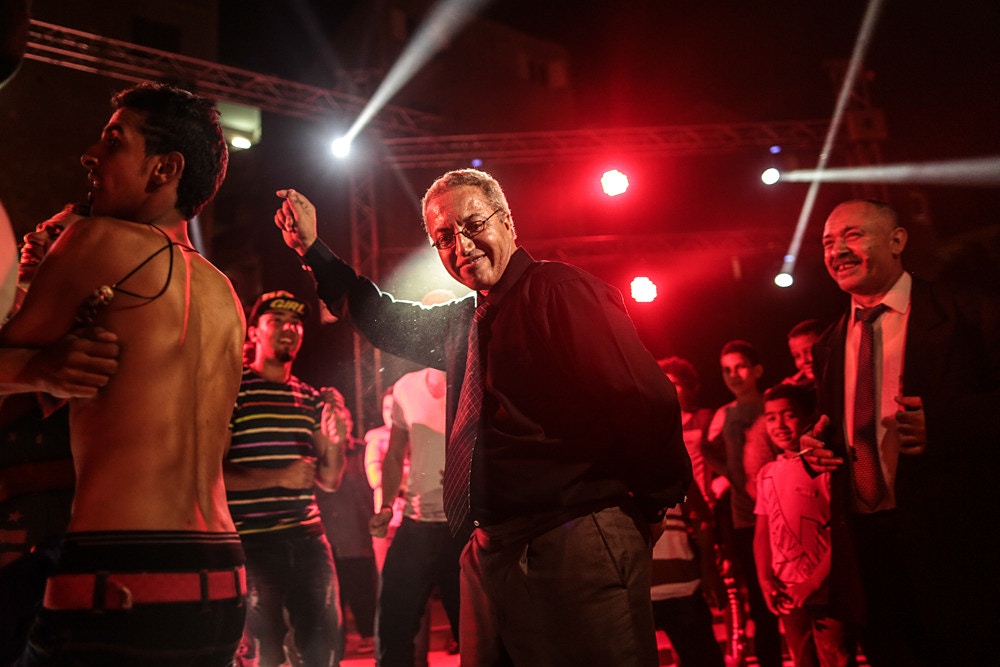
Evolution & Metamorphosis
Mahraganat showed potential for development early on in its life as we’ve witnessed with the Alexandrian scene. However, over the past six years it went on to inspire musicians far and near, both geographically and musically, starting with Egyptian producer Maurice Louca’s 2014 sophomore album Benhayyi El Baghbaghan (We Salute The Parrot) and leading up to work of more recent artists and DJs like Molotof, 3Phaz, ElKontessa and even influencing selected works of non-Egyptian artists like DJ Plead and DJ Haram.
With each artist this influence took on a different form. The most recent example to emerge is the internationally lauded, self-devised ‚mahraganat-inspired, percussive club music‘ of 3Phaz, who combined the genre with his background in club music under a previous alias.
For Maurice on his Parrot album it was left-field electronica inspired by different shades of shaabi with mahraganat featuring prominently throughout, often supported by appearances of some of the sound’s founding figures like Amr 7a7a & Alaa 50
In the case of Molotof, his first take on mahraganat was under his Hadayek 303 alias where he experimented heavily with adding an acid element to the sound. Later on, under his Molotof moniker, he helped set in motion a style that would contribute to an aesthetic blur in the lines between mahraganat and trap, namely through early collabs with rapper Marwan Pablo like ‚El Gemeza‚ and ‚Geb Felos‚, and also Wegz on ‚Bel Salama‚ and ‚Dorak Gai‚.
Rightfully dubbed „molowave“ this sound would not only become sought after by rappers but also something other producers tried to recreate, becoming sort of a benchmark for releases in 2020. „I think mahraganat seeped into the rap world because as a sound it evolved into something very similar. Soundwise, you had similar 808’s and percussion that lured rappers into singing on top of them“, said Molotof. This similarity can perhaps be felt more clearly in the work of younger mahraganat artists climbing the ranks, like Shubra El General, Wezza Montaser, and the Double Zuksh duo.
War & Peace with Rap Music
While rap and mahraganat crossovers happened fairly early into the 2010s, the reaction was never entirely positive. In fact, visible hostility could be seen within the rap community’s following on social media, and for the longest time it seemed like the rap scene had something negative to say about mahraganat. From subtle classist remarks from rappers themselves, particularly the more old school sounding few, to a constant split among rap audiences whenever rappers they admire decided to experiment with the sound.
Despite the proven success of the sound melange emerging from the two genres, manifested in millions of Youtube views (50M+ in Wegz’s case) and heavy rotation during events „some rappers have tremendously classist views towards the mahraganat sound, which is ironic itself as rap and hip hop are both genres that emerged from the streets“, Molotof said.
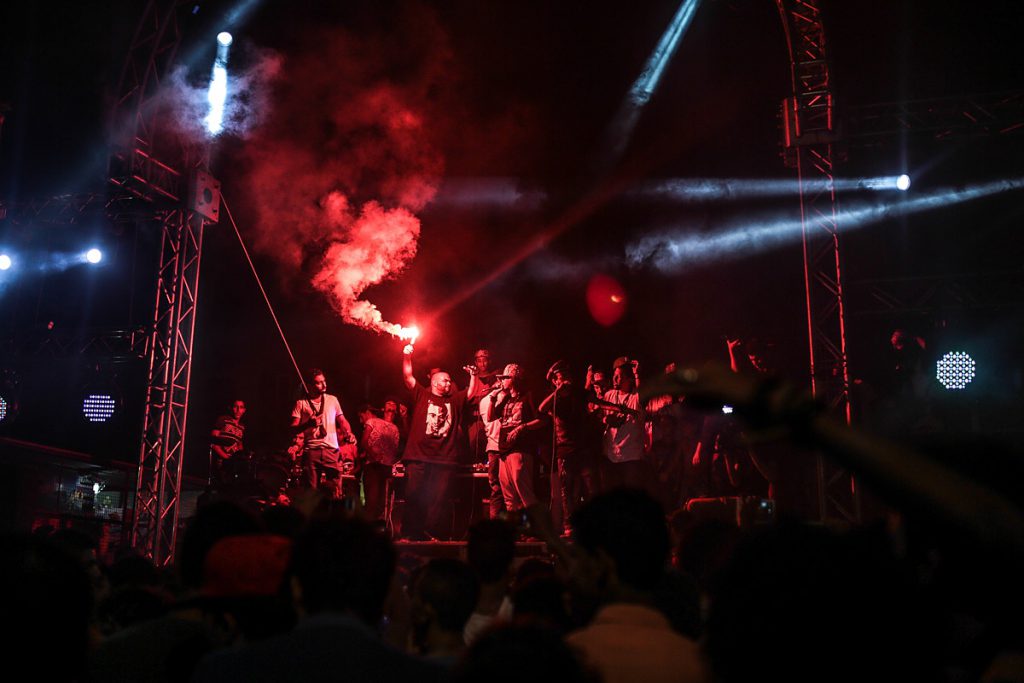
This hostility could be attributed to several factors, the first being how mahraganat MCs flow. Many rap enthusiasts translated the similarities into a mindset where mahraganat became sort of a ‚poor man’s knock off‘ of rap, and judging by the background the sound emerged from and the socioeconomic climate that molded it, a ‚poor man’s knock off‘ couldn’t be more accurately inaccurate.
On the other hand you have the self-proclaimed genre purists, a common phenomenon found around the globe. Yet oddly enough Egypt developed purists for a genre it could never, in a million years, call its own. Which is quite the idiosyncrasy judging how mahraganat’s juxtaposition in Egyptian society mirrors exactly that of hip hop early on in its life, between widespread acceptance and outright cries to outlaw it.
More Local Scrutiny
In early 2020, the musician’s syndicate of Egypt, headed by renowned local pop singer Hany Shaker, released a statement banning mahraganat singers from performing live. This came immediately following a televised performance in which singer Hassan Shakosh merely mentioned the words ‚alcohol‘ and ‚hashish‘ in the lyrics of one of his smash hits.
While this decision hardly had an impact on weddings and urban events, it added more harm to mahraganat’s already hobbling reputation. Furthermore, the statement said that mahraganat musicians ‚will no longer be able to obtain a license‘ to perform anywhere. The Jordanian musician’s syndicate soon followed suit for a reason yet unclear, banning the musicians from ever performing in Jordan. Mr. Hany Shaker then went on as far as contacting Youtube and requesting they take down any song related to genre in a fairly absurd and possibly comical move.

When asked on the topic, Mahmoud Refaat said: „For the longest time a certain echelon of musicians was in demand, whether in ads, gigs, weddings, big label deals and kept all the audiences. Then, all of a sudden, musicians from an entirely different background, unorganized and un-syndicated, came in and swept the rug from under that big economy.“
This big economy Mahmoud is referring to encompasses everyone from now-washed up pop stars, to musicians who used to work local nightclubs and weddings, and by nightclubs here I’m not referring to Berghains and Fabrics, but more of our modern take on cabarets featuring singers, their backing bands and belly dancers, indeed a small economy on its own. So you can better imagine the threat when you imagine a singer, his 6-12 piece band, and 2-3 bellydancers being replaced by a DJ and an MC – or worse, just the DJ.
„So the whole syndicate ban is purely economic in my opinion, fueled by natural bitterness resulting from competition. Obviously claiming mahraganat is unethical is just a tactic to perpetuate that cause. The head of the syndicate currently comes from that background, so I hope one day someone neutral would be in that position who can look at matters fairly“, Refaat added.
Future challenges
Asides from the obvious pressure stemming from the sociopolitical climate of the country which only ebbs and floats, i.e the exponentially stifled freedom of speech, horrid censorship, all aided by the long-cast shadow of religious morality, mahraganat is becoming increasingly threatened by its own commodification. Sure, Mr. Hany Shaker might want to ban the genre, but the first track to play at every wedding he attends will a 99 percent be a mahragan, he’s also no longer tapped to feature in TV commercials, because well, Pepsi, Vodafone or the newest brand of spread cheese all want a maharaganat artist spitting about their newest product, nor will he be asked to contribute to a movie’s soundtrack either, because the studios are reaching to younger audiences and want to achieve box office success.
Sure, this increased demand for mahraganat as an advertising tool for all sorts of products and services only makes sense when you really think about it, and can’t be that bad at first glance, considering how an artist with less than nothing might be able to secure a future for himself and his family. No, really. A sound deep out of Cairo’s brutal underbelly, in a country where a third or more of 101 million people live in poverty, used to market and sell products back to that very segment, pretty diabolical actually and everyone wins right?
Well, hold your tuktuks for just a second. This capitalization on the sound not only threatens the integrity of the genre, the choice of topics it deals with, and its accessibility to the masses, but its lucrative deals give rise to artist agencies popping up out of nowhere overnight or middle-men who have little to no music-industry knowledge mediating deals. You see, an artist getting paid a large sum of money to sing a couple of lines in an ad for an FMCG colossus, later becoming a hit, sets a dangerous example for MCs and producers, who will only aim for that kind of market to see success and big cash.
As Mahmoud Refaat put it: „This scary rise of middle-men involving themselves in record deals, sponsorships is creating a mess in the industry. Of course it’s great when a mahraganat artist lands a sponsorship with a company in the GCC [Gulf Cooperation Council] for instance, but then it’s creating harm in the sense that some of the biggest bands in the country now only deal in figures no less than 600K and 700K EGP (38K-45K USD) for ads and concerts, making them only accessible to big corporations, hugely harming the music’s economy.“
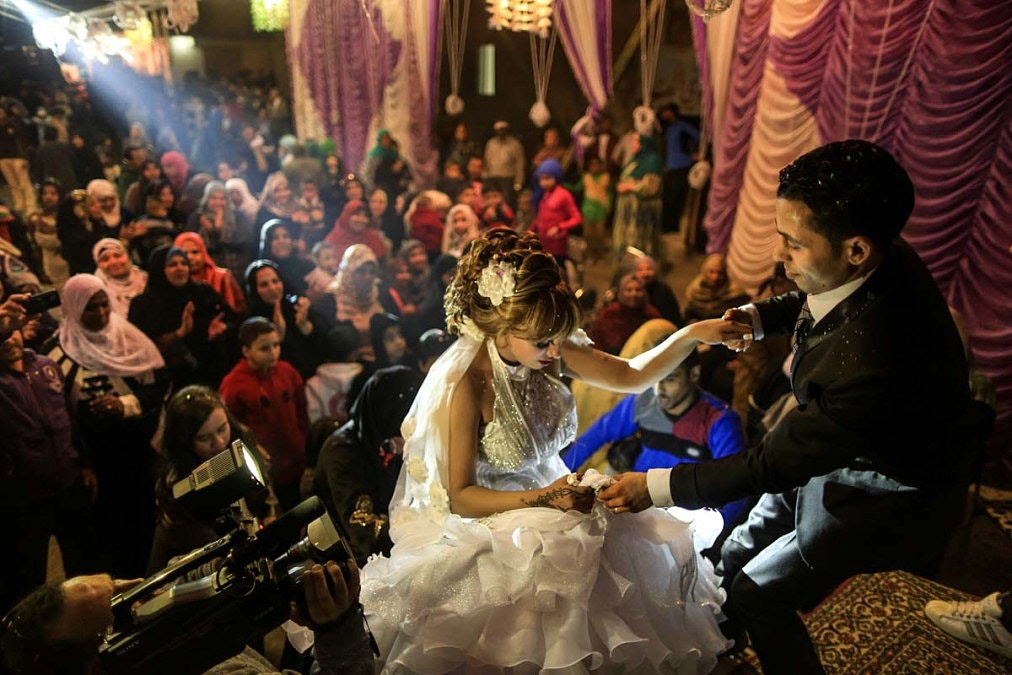
Well, think about it this way, in about 15-20 years time one of Mr. Hany Shaker’s grandchildren might get married, and a mahragan about a certain brand of energy drink will set the dance floor ablaze, and there’s nothing he’ll be able to do about it.
He’ll probably think back and wonder what would’ve happened if he had gone out and proclaimed the genre a national art form, that should be supported instead of stifled, included instead of ostracized and left for big corporations to show it its only form of financial support.
This article is part of the Global GROOVE: Electronic Music Journalism series, hosted by GROOVE in collaboration with the Goethe-Institut. Read all other articles here.
About the author: Fady Adel is an independent music journalist from Egypt and the former editor-in-chief of the Middle East and North Africa-focused platform Scene Noise. He also works as a regional booking agent for several artists and did A&R work for the Egyptian label Rakete.
